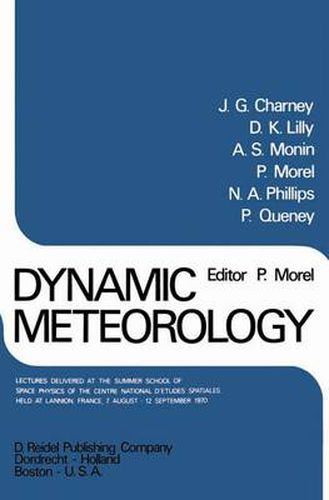Readings Newsletter
Become a Readings Member to make your shopping experience even easier.
Sign in or sign up for free!
You’re not far away from qualifying for FREE standard shipping within Australia
You’ve qualified for FREE standard shipping within Australia
The cart is loading…






This title is printed to order. This book may have been self-published. If so, we cannot guarantee the quality of the content. In the main most books will have gone through the editing process however some may not. We therefore suggest that you be aware of this before ordering this book. If in doubt check either the author or publisher’s details as we are unable to accept any returns unless they are faulty. Please contact us if you have any questions.
The development of numerical integration techniques and the pioneering efforts of Von Neumann and his associates at the Institute for Advanced Studies (Princeton) have spurred the renewed interest of many leading fluid dynamicists and meteorologists in the theory and numerical simulation of planetary atmosphere and oceans circulations. Their work during the last 15 years, now culminating in the Global Atmospheric Research Program, has led to the possibility of vastly improved weather forecasts as wei I as the development of a ful I fledged branch of the physical sciences: geophysical fluid dynamics. Simultaneously, great strides have been made in developing new instruments, operating from earth orbiting satel I ites, to powerful observe the meteorological phenomena and to determine the state of motion of the atmosphere. Centre National d'Etudes Spatiales (CNES) of France has very significantly contributed to this effort by developing the EOLE navigation and data collection satell ite, launched on 16 August 1971 to interrogate 500 instrumented platforms measuring meteorological para meters. It is fitting then, that CNES should have brought together lead ing scientists in the field of dynamic meteorology, to participate in its 1970 Summer School on Space Physics.
$9.00 standard shipping within Australia
FREE standard shipping within Australia for orders over $100.00
Express & International shipping calculated at checkout
This title is printed to order. This book may have been self-published. If so, we cannot guarantee the quality of the content. In the main most books will have gone through the editing process however some may not. We therefore suggest that you be aware of this before ordering this book. If in doubt check either the author or publisher’s details as we are unable to accept any returns unless they are faulty. Please contact us if you have any questions.
The development of numerical integration techniques and the pioneering efforts of Von Neumann and his associates at the Institute for Advanced Studies (Princeton) have spurred the renewed interest of many leading fluid dynamicists and meteorologists in the theory and numerical simulation of planetary atmosphere and oceans circulations. Their work during the last 15 years, now culminating in the Global Atmospheric Research Program, has led to the possibility of vastly improved weather forecasts as wei I as the development of a ful I fledged branch of the physical sciences: geophysical fluid dynamics. Simultaneously, great strides have been made in developing new instruments, operating from earth orbiting satel I ites, to powerful observe the meteorological phenomena and to determine the state of motion of the atmosphere. Centre National d'Etudes Spatiales (CNES) of France has very significantly contributed to this effort by developing the EOLE navigation and data collection satell ite, launched on 16 August 1971 to interrogate 500 instrumented platforms measuring meteorological para meters. It is fitting then, that CNES should have brought together lead ing scientists in the field of dynamic meteorology, to participate in its 1970 Summer School on Space Physics.